View 2025 Business Trends View 2024 Business Trends
MHEDA’s Executive Committee developed the top business trends impacting the material handling industry as we move into 2025. We encourage you to use the Trends to discuss these topics with your leadership team and utilize MHEDA for resources to help your organization manage in the months ahead.
If you have any questions or comments about this process or what is listed below, please contact the MHEDA office.
2025 Material Handling Business Trends
1The economic outlook presents a cautiously optimistic scenario in certain regions and industry segments while others continue to have an unpredictable recovery as the market normalizes.
2The integration of AI-driven technologies, such as autonomous robots, predictive analytics, and real-time supply chain visibility, is transforming traditional processes and setting new standards for operational excellence.
3The industrial truck segment is experiencing cash flow pressure due to increased inventory, interest rates, tightening credit conditions, and extended payment terms along with a reduction in rental utilization and used equipment values.
4The storage and handling segment is experiencing pressures from other segments entering their market and manufacturers’ capacities outpacing customer demand.
5Emerging technologies are requiring members to quickly develop tech driven solutions and integrate them into traditional automation solutions.
6Heightened cybersecurity risks are impacting companies’ ability to safeguard sensitive data and to ensure customer trust, supply chain continuity and business stability.
7Consolidation continues with acquisitions by private equity firms, manufacturers and distributors.
8There are increased demands from customers and suppliers for members to adhere to environmental, social, and corporate governance requirements.
9Employees are facing increased pressure and look to employers for financial and mental health services.
10Requirements continue to increase for permitting and engineering as well as contractor licensing and safety.
11Equipment electrification, mobile robots and automated guided vehicles (AGV) will continue to impact member sales and aftermarket operations.
12The volatile geopolitical environment creates risks to global markets and business operations.
13The talent gap continues to grow, increasing the challenge of hiring skilled employees for members.
14Strategic partnerships between manufacturers and distributors are more important than ever as demand for direct consumer business increases.
15There is an increase in low cost imported products putting pressure on margins for both distributors and manufacturers.
2024 Material Handling Business Trends
1The current economic uncertainty is driven by a combination of global supply chain disruptions, inflationary pressures, and geopolitical tensions, leading to heightened market volatility and cautious consumer behavior. Members should monitor key performance indicators and proceed accordingly.
2Technology is profoundly impacting the material handling industry including artificial intelligence, digital automation, data-driven decision-making, and the integration of advanced systems that optimize efficiency, productivity, and safety. Members must have a clear understanding of emerging technologies.
3Companies need to take cybersecurity risks seriously to safeguard sensitive data, protect customer trust, maintain business continuity, and mitigate the potential financial and reputational damages resulting from cyberattacks. This issue must be prioritized and steps have to be taken to enlist both internal and external partners to protect against this threat.
4Labor shortages across all job classifications continue, resulting in ongoing wage pressure.
5Fraudulent activities are on the rise in business due to the increasing reliance on digital technologies, sophisticated cyber threats, and evolving scams, posing significant risks to organizations’ financial health and reputation.
6It is essential for leaders to be mindful of workforce challenges including worker fatigue, lack of engagement, mental health challenges and low morale. Enhancing organizational culture and offering support when needed, is critical.
7Members need to be cognizant of environmental, social and corporate governance (ESG) and potential customer and supplier demands for ESG compliance.
8Larger end-users are modifying their procurement processes and demanding terms, rebates and complimentary services. This impacts cash flow and poses a risk to the member organization.
9There is a correlation occurring as it relates to forklift inventory. Orders are declining, used equipment pricing and rental utilization are decreasing and there are increased requirements to order new equipment. This is placing pressure on the forklift distributor and cash flow.
10With succession planning and consolidation continuing, the business valuation model will fluctuate along with changing economic conditions.
11Requirements continue to increase for permitting, contracts, contractor licensing and safety. Members must have a clear understanding of these requirements and recognize both the risks and opportunities.
12Due to shifts in buying dynamics, distributors and manufacturers must recognize the opportunities and be collaborative as it relates to e-commerce and on-line purchasing.
13As the trend toward electrification continues, members should explore diversification options to protect aftermarket profitability.
14To capitalize on the demand for automation, the member must understand the engineering complexities and the in-house or outsourced expertise required. Servicing of these operations is becoming increasingly important and an opportunity for members.
 |
 |
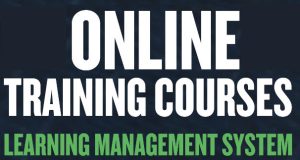 |
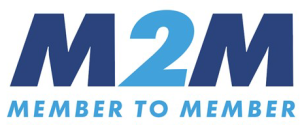 |
 |
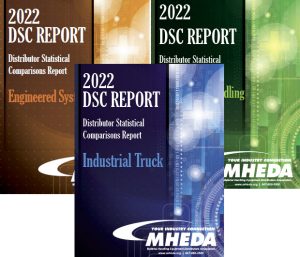 |
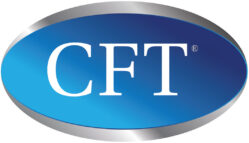 |
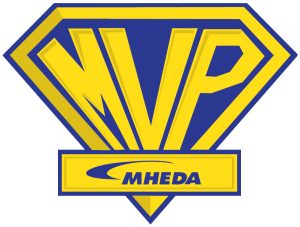 |
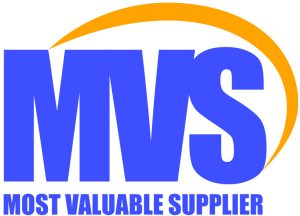 |



